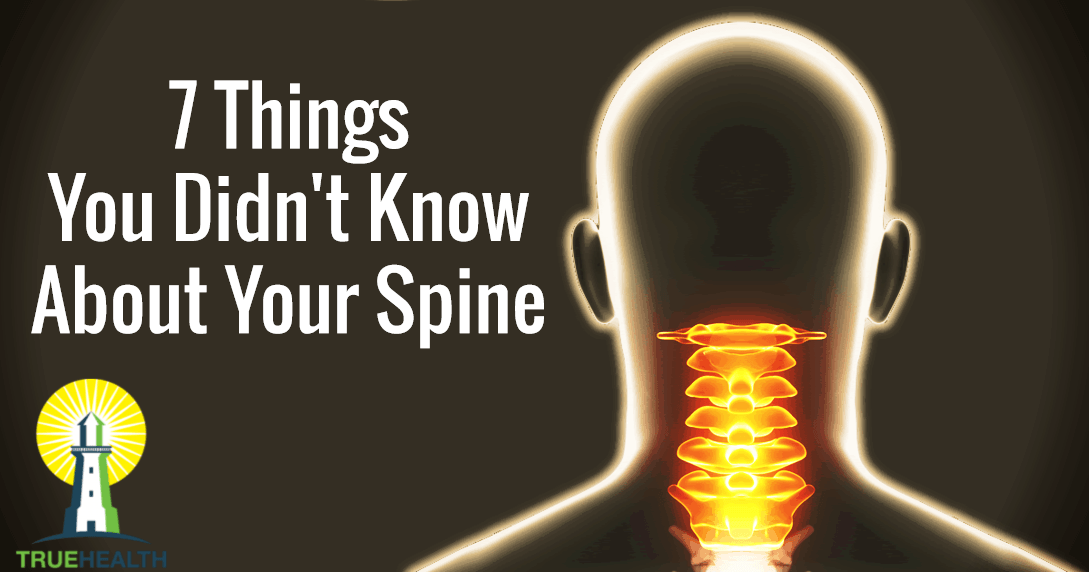
Our body is an architectural masterpiece – designed to do extraordinary things when functioning optimally. As a Structural Chiropractor, my focus is on the design of your spine. When the spine’s structure matches the blue prints from your DNA, then it is designed to handle the stresses of gravity and a healthy level of activity. However, when the spine loses its proper structure, then those stressors (gravity and activity) can suddenly reveal its weakness. With that in mind, lets look at seven things you may not have known about your spine:
1. Your Spine is the “Lifeline of Your Body” It has the responsibility of carrying more than a million electrical nerve messages between your brain and your body every day. For you to digest food, move your arm, wiggle your toes, or perform a burpee, signals have to traverse from your brain to your spinal cord, which is inside your spine. You have more than 45 miles of nerves in your body, constantly communicating and coordinating all of your actions, whether you are consciously thinking about it or not. It even controls things like your immune system. In many ways, it’s like the electrical system of your house with your brainstem acting as the power source. Make sure your electrical system is working by getting all the necessary structural corrections.
2. We Lose Vertebrae As We Age When we are first born, we start off with 33 vertebrae, but we only end up with 24 by adulthood. As humans grow older, some of these vertebrae fuse together. The five vertebrae that form our sacrum become a single bone and the coccygeal vertebrae – which can vary from three to five bones – fuse together to become one. Thus, the tailbone is formed.
3. Your Body is Equipped with Shock Absorbers Pads of tough, fibrous cartilage, known as intervertebral discs, are sandwiched between your vertebrae. They cushion your vertebrae to absorb shock. The combination of these discs and your S-shaped spine prevent shock to your head when you walk or run. Normal structural alignment can help prevent compressed or degenerated discs from occurring.
4. Your Spinal Cord has an Exceptional Memory That’s why it’s essential to treat it right from an early age. The spinal cord has over 100 joints, at least 220 ligaments and over 120 total muscles. Muscles that attach to the spine are used to provide flexibility, movement, and power. The more aligned your spine is, the more efficiently your muscles can fire, producing more strength. Taking care of structural problems early in life can help prevent secondary conditions (symptoms) from occurring and reduce the amount of chiropractic care needed.
5. Gravity Affects Height Since the spinal cord is roughly 25 percent cartilage, this can affect our height. Astronauts returning from space can be up to 3 percent taller, gaining as much as two inches in height because their cartilage discs expand in microgravity. The rest of us are at our tallest when we first awaken, due to gravity’s shrinking effect throughout the day.
6. You have 71cm The average length of the vertebral column in men is about 71 cm. In women, the average is about 61 cm. The cervical part measures about 12.5 cm, the thoracic part about 28 cm, the lumbar part about 18 cm, and the sacrum and the coccyx about 12.5 cm.
7. The First Cervical Vertebra is also Called the Atlas. Atlas was one of the Titans in Greek mythology. After a fight with Perseus, Atlas was turned to stone and had to carry the weight of the Earth and heavens on his shoulders. Therefore, the first cervical vertebra was named the atlas because it carries the weight of the head. Along with the Axis (the 2nd vertebrae in your neck), these are what we call the Foundational segments of the spine. Many of the secondary conditions we see in our office are due to the structural alignment being off at these segments.

